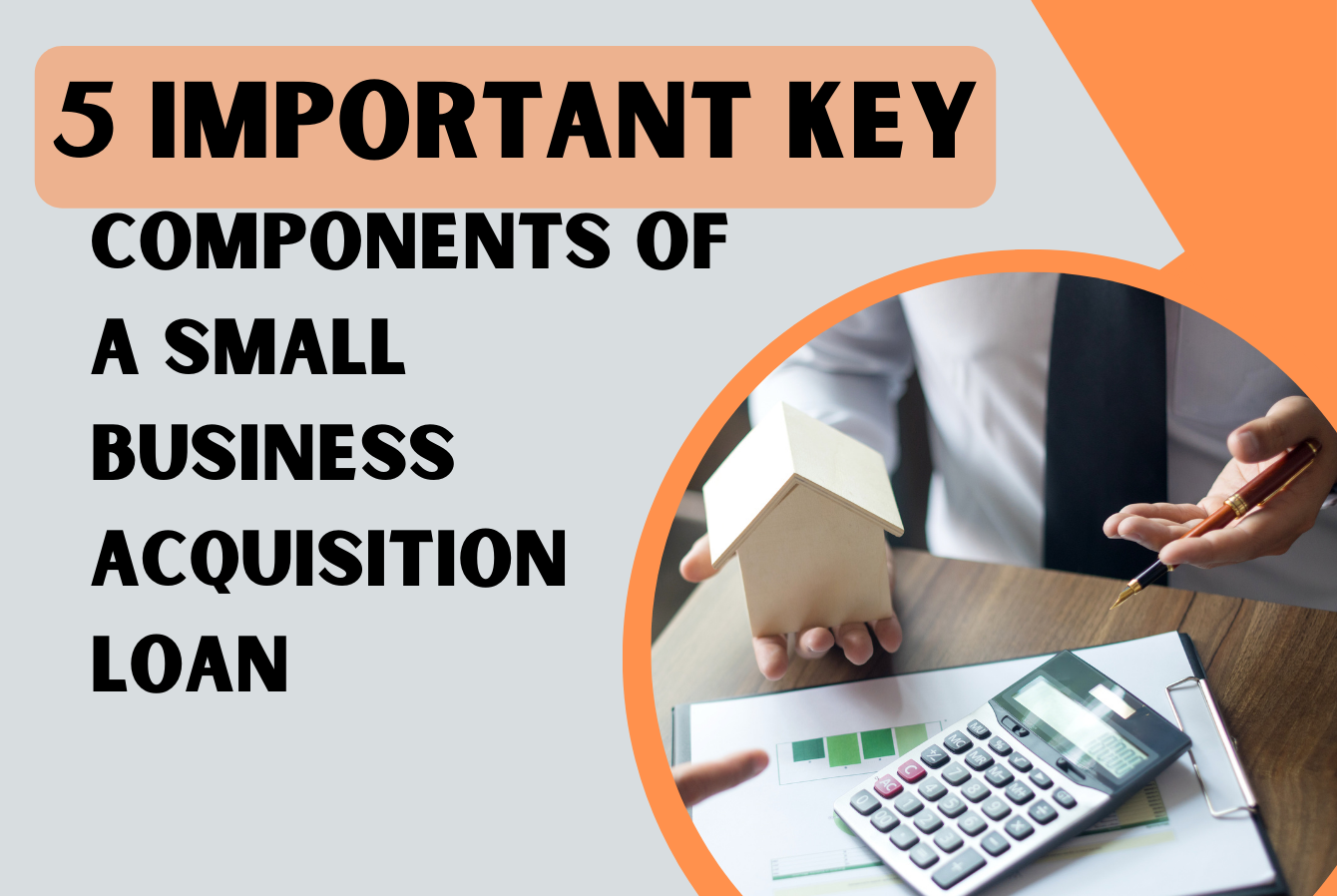5 Important Key Components of a Small Business Acquisition Loan
The Biggest Challenges in Getting a Business Acquisition Loan To put it mildly, it could be extremely challenging to satisfy the conditions for small business acquisition financing.
If the business is particularly successful, the selling price will likely contain a large amount of goodwill, which might be very difficult to finance.
Even if the company being sold is successful and the main assets are worth far more than the acquisition price, obtaining financing may be difficult.
Depending on the circumstances, loans for company acquisitions or finance for a change in ownership may be quite different.
The following are the primary challenges you'll often face when applying for a small business acquisition loan:
1. Paying for Goodwill
Goodwill is defined as the selling price of a company's assets minus their value upon resale or liquidation, less any existing debts on those assets. It demonstrates the extra profit the business will probably produce in the future in addition to the value of its current assets.
Lenders, in general, are reluctant to fund goodwill.
The amount of the down payment required to complete the deal and/or get vendor financing in the form of a vendor loan is essentially increased as a result.
Small company sales often include vendor loans and assistance.
If help and finance are not already included in the conditions of the transaction, you may want to ask the seller about them.
There are several excellent reasons why you should ask the question.
In order to get the greatest sale price possible, which most certainly includes some goodwill, the seller will offer to finance a part of the transaction by allowing the buyer to pay a portion of the selling price over a set period of time under a structured payment plan.
The vendor might also provide transition help for a time to guarantee a seamless changeover.
Due to the support and financing it has given, the vendor has a positive vested interest, putting it in their best interest to help the buyer with a seamless transition of ownership and management.
Failure to comply with this condition may result in the vendor not obtaining all future sales proceeds in the event the company suffers or fails under new ownership.
This characteristic is often quite tempting to potential lenders since it greatly reduces the possibility of loss due to transfer.
2. Business Transition Risk
Will the new owner be in a position to run the business as effectively as the old one? Will the clients still use the old owner for purchases? If so, did they possess a skill set that will be difficult to replace? Will the company's senior executives stay on after the sale?
Lenders need to be certain that the company can continue to function at its present levels. Financial forecasts often need a cushion to account for unforeseen transition delays.
At the same time, many buyers will buy a business because they believe they will profit from the massive growth they perceive to be there.
The challenge is convincing the lender of your ability to improve and provide better results.
3. Share sales vs. asset sales
For tax-related reasons, a lot of sellers want to sell the stock in their business.
However, barring any express provision to the contrary in the purchase and sale agreement, the buyer will be liable for all present and future obligations of the continuing concern company.
Since potential business liability is a challenging problem to examine, there may be a greater perceived risk when examining a small company acquisition loan application related to a share purchase.
4. Market Danger
Does the business operate in a market that is developing, expanding, or contracting? What part does the company play in the market's competitive environment, and would a change in control make it simpler or more difficult for it to compete?
The lender's belief in the company's capacity to sustain profitability for at least the time the business acquisition loan will be in force must be confirmed.
There are two reasons why this is crucial. First, it should go without saying that repayment will be simpler with a steady cash flow. Second, a company that is a strong continuing concern is more likely to be sold again.
The lender will be sure that the company can continue to generate enough revenue from sales in the event that an unforeseen occurrence prevents the business's owner from running it.
Compared to companies with a greater worldwide reach, niche markets are easier for lenders and investors to assess. Local lenders could also be aware of the particular business and how well-known it is in the neighborhood.
5. Individual Wealth
The buyer normally has to have physical assets that are at least equal to the loan's outstanding amount, as well as the ability to pay at least one-third of the total purchase price in cash.
According to statistics, businesses with high levels of debt are more likely to have financial problems and break their loan agreements for business acquisitions.
The size of the business and the amount of purchase finance required both enhance the risk of default.
Summary
If you want to get a firm acquisition loan, you must be aware of and in control of the critical parts of the deal the lender will be considering. Here, you will learn the five crucial components of a business purchase and some advice on how to properly manage them in order to make money.

